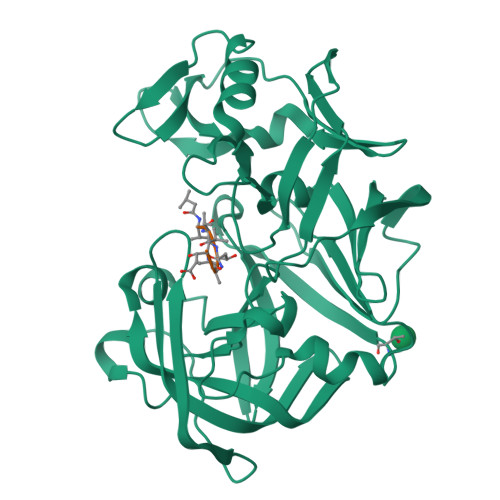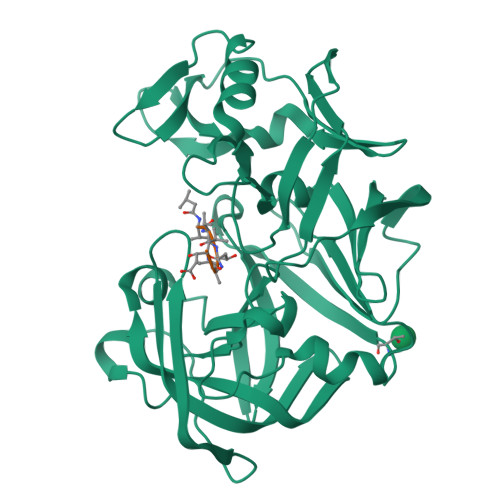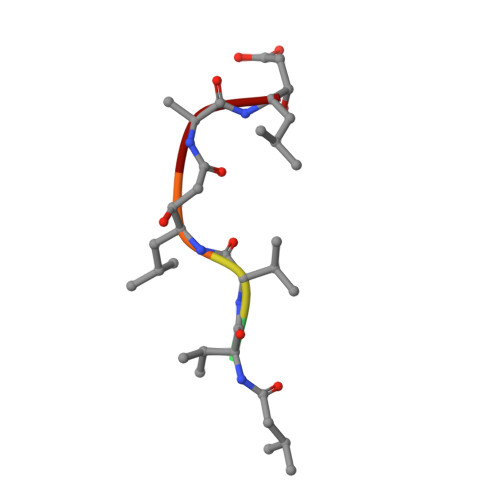Crystal structures of Aspergillus oryzae aspartic proteinase and its complex with an inhibitor pepstatin at 1.9A resolution.
Kamitori, S., Ohtaki, A., Ino, H., Takeuchi, M.(2003) J Mol Biology 326: 1503-1511
- PubMed: 12595261
- DOI: https://doi.org/10.1016/s0022-2836(03)00078-0
- Primary Citation of Related Structures:
1IZD, 1IZE - PubMed Abstract:
The X-ray structures of Aspergillus oryzae aspartic proteinase (AOAP) and its complex with inhibitor pepstatin have been determined at 1.9A resolution. AOAP was crystallized in an orthorhombic system with the space group P2(1)2(1)2(1) and cell dimensions of a=49.4A, b=79.4A, and c=93.6A. By the soaking of pepstatin, crystals are transformed into a monoclinic system with the space group C2 and cell dimensions of a=106.8A, b=38.6A, c=78.7A, and beta=120.3 degrees. The structures of AOAP and AOAP/pepstatin complex were refined to an R-factor of 0.177 (R(free)=0.213) and of 0.185 (0.221), respectively. AOAP has a crescent-shaped structure with two lobes (N-lobe and C-lobe) and the deep active site cleft is constructed between them. At the center of the active site cleft, two Asp residues (Asp33 and Asp214) form the active dyad with a hydrogen bonding solvent molecule between them. Pepstatin binds to the active site cleft via hydrogen bonds and hydrophobic interactions with the enzyme. The structures of AOAP and AOAP/pepstatin complex including interactions between the enzyme and pepstatin are very similar to those of other structure-solved aspartic proteinases and their complexes with pepstatin. Generally, aspartic proteinases cleave a peptide bond between hydrophobic amino acid residues, but AOAP can also recognize the Lys/Arg residue as well as hydrophobic amino acid residues, leading to the activation of trypsinogen and chymotrypsinogen. The X-ray structure of AOAP/pepstatin complex and preliminary modeling show two possible sites of recognition for the positively charged groups of Lys/Arg residues around the active site of AOAP.
Organizational Affiliation:
Department of Biotechnology and Life Science, Tokyo University of Agriculture and Technology, 2-24-16 Naka-cho, Koganei, Tokyo 184-8588, Japan. kamitori@cc.tuat.ac.jp





















